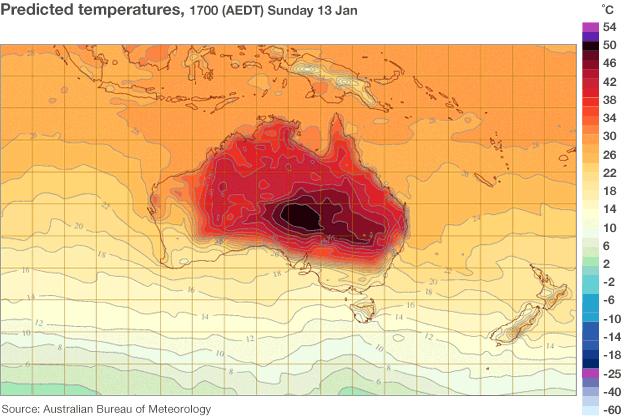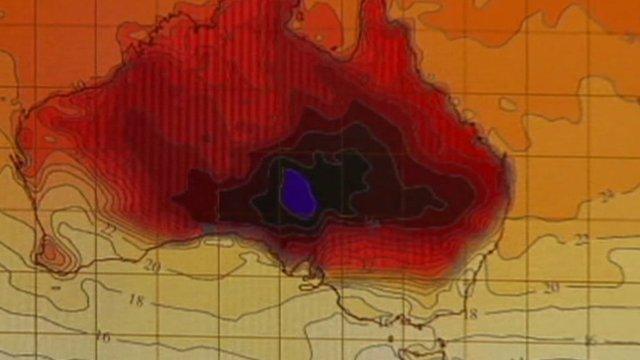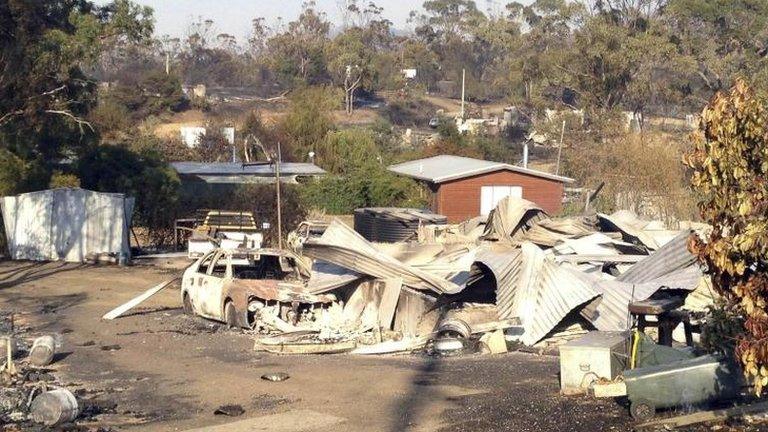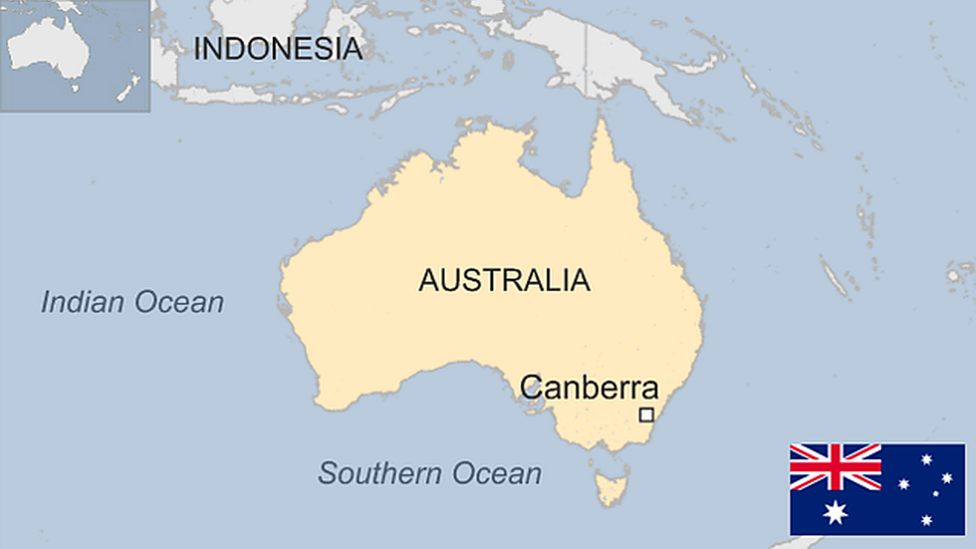Bushfires rage on in Australia 'helped' by climate change
- Published
The BBC's Phil Mercer: "More than 100 bushfires are burning in New South Wales"
Australian firefighters are continuing to tackle more than 100 bushfires, which have gutted houses and thousands of hectares of land.
Officials say temperatures are lower than feared, but gusty winds are making it hard to contain the blazes in New South Wales, Victoria and Tasmania.
Six people have been treated for heat exposure, but nobody has died.
A government commission says the heatwave and fires have been exacerbated by global warming.
"Climate change is increasing the risk of more frequent and longer heatwaves and more extreme hot days, as well as exacerbating bushfire conditions," the Climate Commission said in its report.
It warned that "when fire occurs in more extreme weather conditions, there is the potential for the fire to be far more intense and difficult to control".

Temperatures have been so high the Australian Bureau of Meteorology has increased its temperature scale to 54 degrees, and added a new colour code.
The current heatwave saw the average maximum daily temperature across Australia reach 40.3C (104.5F) earlier this week, breaking the previous record of 40.17C registered in 1972, David Karoly, one of the report's authors, told the AFP news agency.
However, on Saturday temperatures have somewhat eased in the three affected states where the fires have the potential to threaten communities, the BBC's Nick Bryant in New South Wales reports.
He says that so far, local residents have not been fleeing their homes, but there is the worry that the winds will pick up and change direction.
In 2009, more than 170 people died in the so-called Black Saturday firestorm - Australia's worst natural disaster in modern times.
- Published9 January 2013

- Published9 January 2013

- Published6 January 2013

- Published14 April 2023
